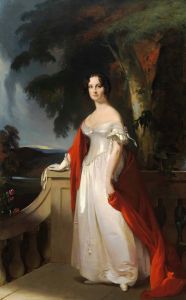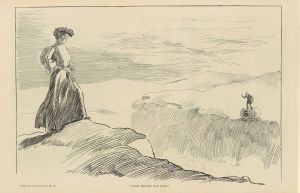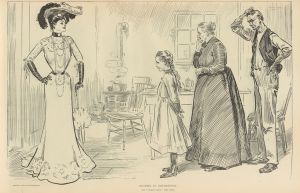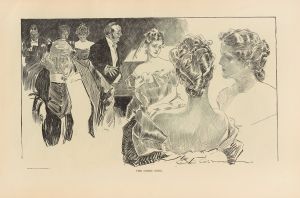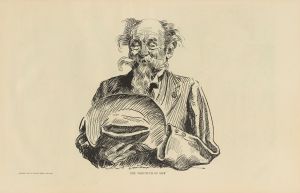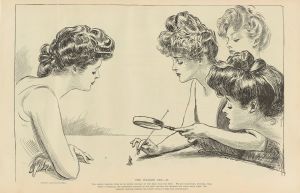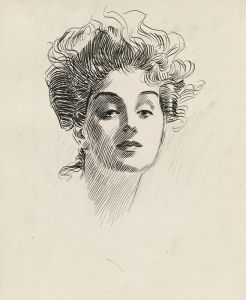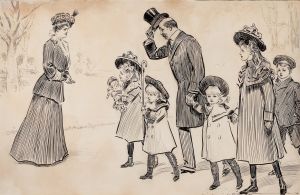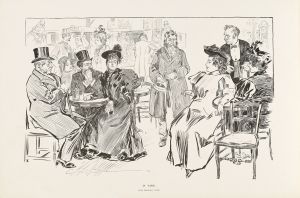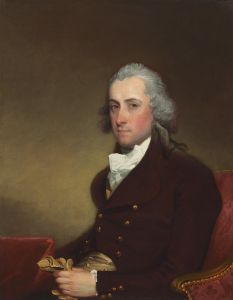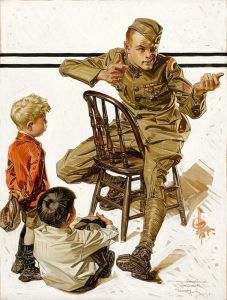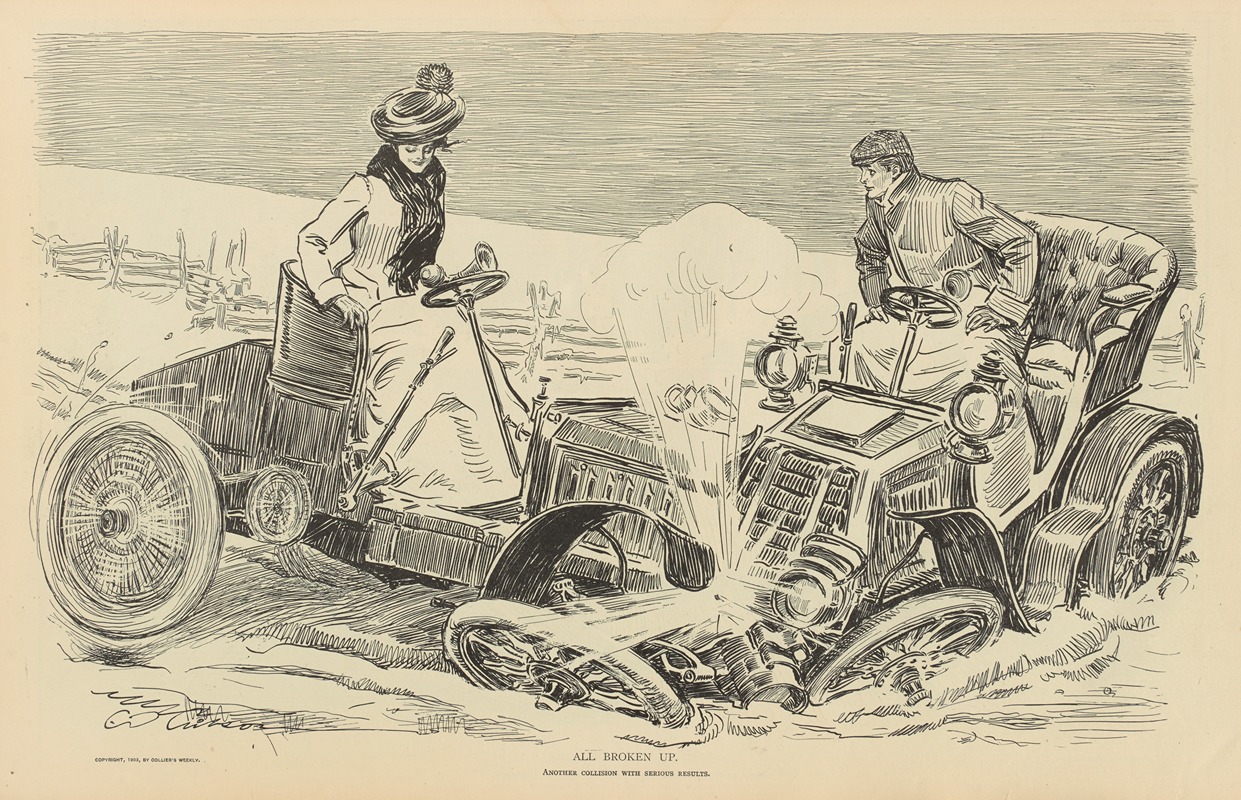
All broken up
A hand-painted replica of Charles Dana Gibson’s masterpiece All broken up, meticulously crafted by professional artists to capture the true essence of the original. Each piece is created with museum-quality canvas and rare mineral pigments, carefully painted by experienced artists with delicate brushstrokes and rich, layered colors to perfectly recreate the texture of the original artwork. Unlike machine-printed reproductions, this hand-painted version brings the painting to life, infused with the artist’s emotions and skill in every stroke. Whether for personal collection or home decoration, it instantly elevates the artistic atmosphere of any space.
Charles Dana Gibson was an influential American illustrator, best known for creating the iconic "Gibson Girl," a representation of the idealized American woman at the turn of the 20th century. Among his numerous works, "All Broken Up" is one of the illustrations that showcases his distinctive style and keen observation of social dynamics.
"All Broken Up" is a black-and-white illustration that captures a moment of emotional intensity and social commentary, typical of Gibson's work. While specific details about the creation date or the exact context of this particular piece are not extensively documented, it is consistent with the themes Gibson explored throughout his career. His illustrations often appeared in popular magazines of the time, such as Life, Harper's Weekly, and Scribner's, and they were instrumental in shaping public perceptions of gender roles and societal norms.
The illustration "All Broken Up" likely features the characteristic elements of Gibson's style: detailed pen-and-ink drawings with a focus on expressive faces and postures. His work often depicted scenes of upper-middle-class life, with an emphasis on the interactions between men and women. The title "All Broken Up" suggests a scene of emotional turmoil or a relationship in distress, which would align with Gibson's interest in the complexities of social and romantic relationships.
Gibson's illustrations were not just artistic expressions but also commentaries on the changing roles of women in society. The "Gibson Girl" became a symbol of the new, independent woman, and while "All Broken Up" may not feature this archetype directly, it is part of the broader narrative Gibson crafted through his art. His work resonated with audiences because it captured the spirit of an era marked by significant social change, including the women's suffrage movement and evolving gender dynamics.
The impact of Gibson's work, including pieces like "All Broken Up," extended beyond the pages of magazines. His illustrations influenced fashion, with women emulating the style and demeanor of the "Gibson Girl." Moreover, his art contributed to the dialogue about women's roles and the expectations placed upon them, making his work both a reflection and a critique of his time.
In summary, while specific details about "All Broken Up" are limited, it can be understood within the context of Charles Dana Gibson's broader body of work. His illustrations, characterized by their detailed execution and insightful social commentary, remain significant in the study of American art and culture from the late 19th to early 20th centuries.







